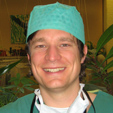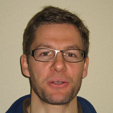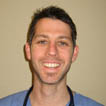Assistant Doctors and Senior Registrars
The SAR is categorised as A1 by the ISFM, which means that a maximum of 3 1/2 years of specific training is recognised.
The SAR is part of the COMASUL Latin Commission, which reviews all candidates eligible for anaesthesiology training in French-speaking Switzerland and Ticino. If the candidate is accepted, COMASUL assists him or her until he or she obtains his or her FMH title, and ensures an efficient distribution of assistants between the university and peripheral hospitals in French-speaking Switzerland. A number of our MAs also move to Berne. They then enter the rotation system of the hospitals affiliated to the Hôpital de l'Ile. Dr Grape takes part in interviews for new MAs at the Hôpital de l'Ile.
In practical terms, the SAR operates at the Sierre, Sion and Martigny sites. A total of around 16,000 anaesthetic procedures are performed, including 1,000 obstetric analgesia procedures. The Preoperative Evaluation Unit carries out over 7,000 pre-anaesthetic consultations. The SAR also carries out around 8,000 acute analgesia consultations a year and almost 5,000 chronic analgesia consultations.
As a cross-disciplinary service, the SAR plays a pivotal role in acute medicine at the CHVR. It plays an active role in the decision-making processes of a number of multi-disciplinary groups, including the resuscitation team, the colorectal, thoracic and gynaecological ERAS team, and the heart team.
The SAR is also very active in the field of training. It offers a multimodal range of courses, including
- interprofessional, anaesthetic and interdisciplinary high-fidelity simulation days
- advanced life support courses (ALS, ILS, BLS, start4Neo and EPALS)
- emergency ultrasound courses such as POCUS cardiac (Winfocus), recognised by the SGUM since 2021, and soon a POCUS thoracic and POCUS vascular course.
A 24-hour on-call service at the Sion site gives our MAs intense and varied clinical exposure. MAs work under supervision adapted to their development. They share on-call responsibility with a team consisting of 1 senior physician and two nurse-anaesthetists. This is a real opportunity to develop teamwork skills.
To carry out these various tasks, the department has the following full-time equivalents:
- Senior doctors: 16.6 FTE (including 3.3 exclusively for the pain management centre)
- Hospital doctor: 1.8 FTE
- Clinical supervisors: 8.4 FTE
- Assistant doctors: 16 FTE (including 2 on rotation in intensive care)
- Nurses: 65 FTE
In general, twelve training places are occupied by candidates for training in anaesthesiology. We recommend 2 to 3 years' training in our establishment, with a 6-month rotation in intensive care. Since 2022, there has also been the possibility of a 1-year rotation at the Pain Clinic to learn chronic pain management techniques. Four 12-month places are reserved for ADs from other disciplines, generally 1 place for intensive care and 3 places for emergency. For emergency ADs, a pathway has been created in 2021 to coordinate the 12-month rotas in intensive care, emergency and anaesthesia.
To sum up, the CHVR's SAR is able to offer each of our young staff (MA or CDC) full and progressive exposure to perioperative medicine (anaesthesiology, intensive care, analgesia). This solid anaesthetic versatility is developed in a climate of high psychological security.
Post-graduate education
Working within the SAR
Assistants and senior registrars are subject to labour laws. We comply with the limit of 50 weekly working hours, usually distributed over a month. As a rule, each assistant doctor has one day on-call and one day of UEP (‘Unité d’évaluation préopératoire’ = Pre-Operation Evaluation Unit) per week. Generally, this involves 4 nights on-call per month. On other days, assistant doctors are involved in the elective surgical programme. In order to take advantage of the specific features of the different sites, they can do service in both the Sierre and Martigny hospitals.
Each assistant and senior registrar is required to actively participate in internal symposia. This may mean presenting a short topic in anaesthetics, or contributing to a club journal.
Update
Update: Mai 2017
The positions marked in red represent training placements that have already been allocated. However, we are interested in all applications, as more positions can be created or freed up.
Feedback from our Assistants

1st and 2nd year of training
In the DAR, we are taken on by 12 different registrars. This variety can be confusing at first. However, you quickly realise the huge benefits which allow us to learn very varied anaesthetic strategies.
I also recommend you visit the following sites: 4 Vallées , Les Bains de Saillon

4th year of training
In the SAR, I learned to do complicated things in an easy way!
I was given a very warm welcome by my colleagues from the ‘Bas-Valais’, despite the ‘Röstigraben’!
The most beautiful region in Valais is where I come from: The Lötschenpass
1st and 2nd year of training
Although this is not a university hospital, the critical mass and diversity of conditions you come across are impressive. During my time in Sion, I practised anaesthetics in all fields: gynaecology, general surgery, thoracic surgery, cardiac surgery, paediatric surgery, ENT...
